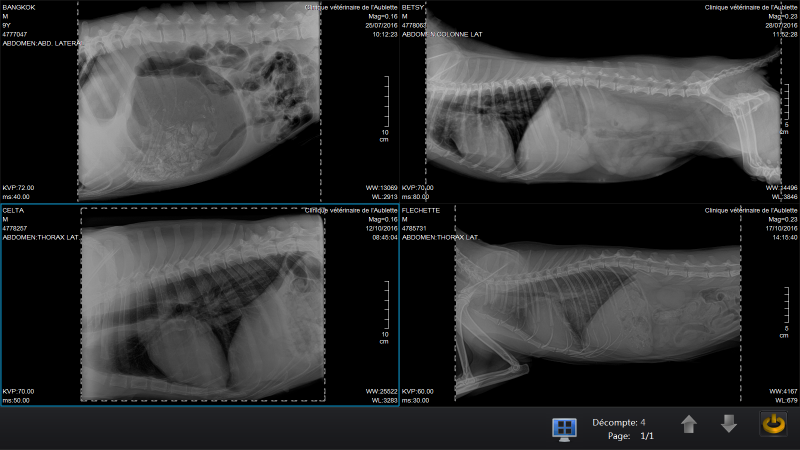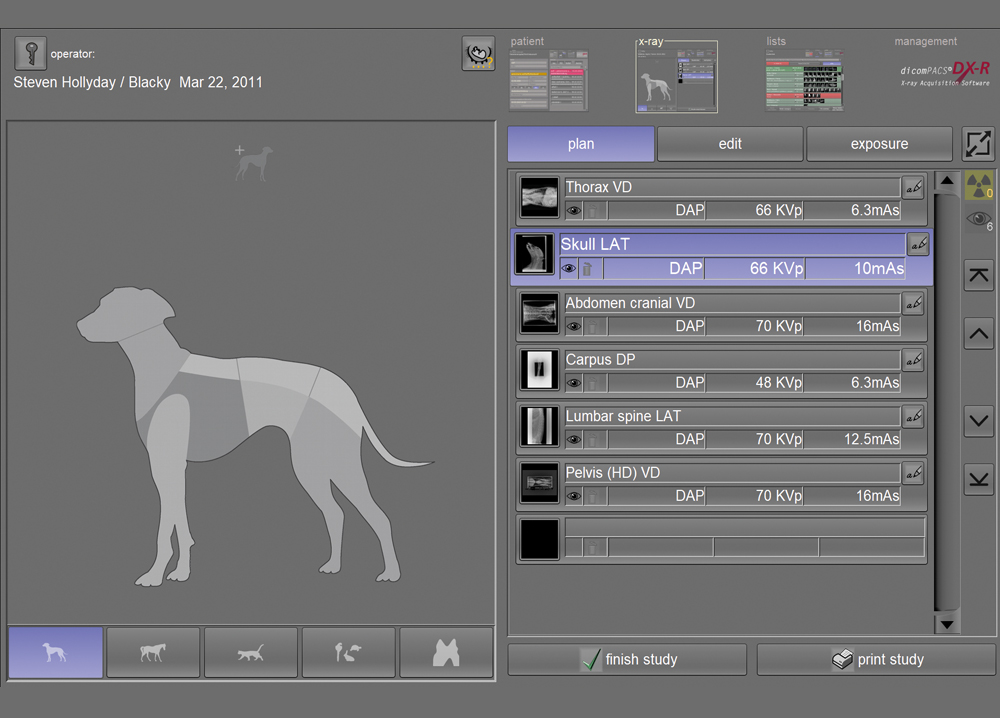


35, 36 PanBW images are acquired using the image projection geometry designed to open posterior dental contacts and consequently increase caries visibility. The Schick33 intraoral sensor has a dynamic image sharpening filter which may aid caries detection by improving lesion edge visualization. Accordingly, the aim of this project was to establish the diagnostic efficacy of these three new dental radiographic imaging technologies for assessing the presence, depth and cavitation status of proximal caries in non-restored teeth using an ex vivo study design. 31 All three of these imaging systems are available, yet there has been limited evaluation of their caries diagnostic performance. The National Institutes of Health has called for continued research on diagnostic methods, including new devices and techniques.
#VETERINARY DIGITAL RADIOGRAPHY CDR DICOM SOFTWARE#
These new technologies include the Schick 33 (Schick 33) intraoral direct digital sensor (Sirona Dental, Salzburg, Austria), the Planmeca ProMax ® (PanBW) panoramic unit in panoramic bitewing mode (Planmeca Inc.) and the Sirona Orthophos XG3D CBCT (XG3D) in high definition (HD) mode with metal artefact reduction software (MARS) (Sirona Dental). 34Ī variety of dental imaging technologies have been recently introduced, each having developments that may increase caries detection. Dentistry also needs improved ability to accurately identify lesion depth and lesion cavitation. 31– 33 With regard to lesion detection, dentistry needs increased sensitivity from new diagnostic systems with no corresponding compromise in the already high specificity rates. 28– 30 Ultimately, the approach to identifying and treating incipient and early caries lesions non-restoratively places a maximum demand on radiographic imaging systems. 27, 28 Assessment of lesion cavitation is also important because cavitated lesions demonstrate a much higher likelihood of progression. Our understanding of the caries disease process has identified lesion depth, activity and cavitation status as significant indicators for the likelihood of lesion progression. 26īroadly, caries diagnosis is not limited to simple lesion detection. 24, 25 Furthermore, increased dose, cost, time and artefact concerns dictate that bitewing radiographs are still the preferred modality for proximal caries detection. 11, 17– 23 A recent review of the literature summarises that CBCT is equivalent to intraoral techniques at detecting clinically relevant caries lesions in minimally restored teeth however, beam-hardening and streak artefacts from metal objects and dense tooth structure (enamel) are limiting factors. Many studies show that CBCT caries detection rates are approximately equivalent to intraoral modalities for non-restored teeth. 13– 15 At this time, the authors are aware of only one published study that has evaluated panoramic bitewing images (Planmeca Promax ® Planmeca Inc., Helsinki, Finland) for proximal caries detection, which found inferior detection rates compared with standard intraoral bitewing radiography. These modalities have been evaluated for their caries detection potential with mostly inferior performance compared with intraoral imaging owing to superimposition of additional structures, increased image blurriness and inconsistent opening of posterior proximal contacts. 12Ĭompared with intraoral imaging, extraoral imaging using panoramic X-ray units promises improved patient comfort and efficiency. 4– 11 Overall, there does not yet appear to be an image enhancement algorithm that delivers clear gains in caries diagnosis. 1– 3 The relatively recent introduction of digital dental radiographic imaging has so far failed to demonstrate any increase in caries detection rates. The radiographic detection rate of proximal caries is far from ideal as standard bitewing radiographs detect only about 60% of proximal lesions.


 0 kommentar(er)
0 kommentar(er)
